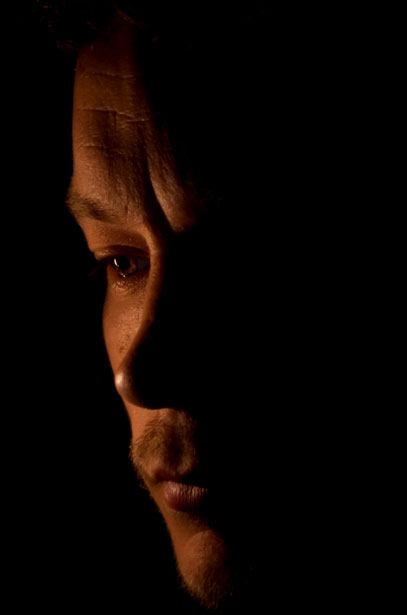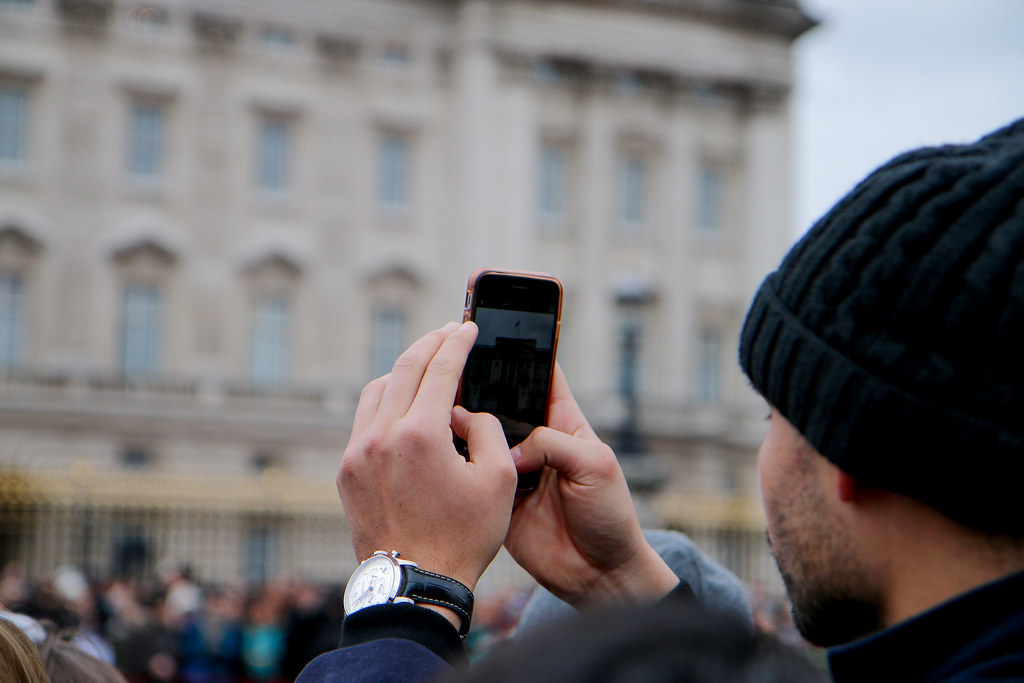
We live in an age where every single moment, every candid smile, every awkward pause, can be captured and shared across the digital universe in an instant. For us mere mortals, a poorly timed snapshot might lead to some good-natured ribbing from friends or an embarrassing meme that fades into obscurity. But for those in the public eye, a single, ill-fated photograph can quite literally halt a soaring career, shattering carefully curated images and forever altering their trajectory. It’s a stark reminder that in the unforgiving glare of the spotlight, a picture truly is worth a thousand words – and sometimes, millions of dollars.
The stories we’re about to dive into are more than just cautionary tales; they’re fascinating glimpses into the power of an image. From political hopefuls whose aspirations crumbled under the weight of visual gaffes, to celebrities who faced public outcry and professional exile, these prominent figures saw their worlds turn upside down because of one single, unforgettable frame. It’s a wild ride through the highs and devastating lows of public life, proving that even the most established careers aren’t immune to the viral wildfire ignited by a photo.
So, buckle up, because we’re counting down some of the most prominent faces whose impressive careers were dramatically derailed, or in some cases, completely crushed, by a single photograph. Get ready to revisit the moments that captivated, shocked, and sometimes even amused the world, as we unpack the sheer power of a picture to make or break a public figure. Let’s get right into it!

1. **Kate Moss**
British supermodel Kate Moss, a name synonymous with high fashion and iconic magazine covers, found herself in the eye of a media storm in 2005. Her career, built on prestigious fashion campaigns and an untouchable image, took a dramatic turn for the worse when the Daily Mirror published front-page pictures that seemed to show her engaging in drug use. The accompanying headline was, to put it mildly, damning, and it ignited a major controversy that sent shockwaves through the fashion industry.
The immediate fallout was severe and swift. Major fashion brands, including luxury powerhouses like Chanel and Burberry, as well as mainstream giant H&M, quickly dropped Moss from their campaigns. This wasn’t just a minor setback; Moss held an estimated £4 million annual contract with H&M alone, highlighting the financial devastation caused by the scandal. The images not only damaged her brand but also prompted a formal investigation by the London Met police, adding a layer of legal trouble to her professional woes.
While all charges against Moss were eventually dismissed, the damage to her public image and career was extensive. For a period, it seemed uncertain if the supermodel could ever truly recover from such a high-profile fall from grace. The episode served as a stark example of how quickly public perception, fueled by a scandalous photograph, can turn on even the most established figures, threatening to erase years of hard-earned success.
However, Kate Moss proved to be incredibly resilient. Despite the widespread condemnation and the significant financial losses, she managed to weather the storm with remarkable speed. In a matter of months, she began to bounce back, reclaiming her place at the forefront of the industry and demonstrating an impressive ability to overcome career-threatening controversies. Her comeback became almost as legendary as the scandal itself, showcasing her enduring appeal and the often-fickle nature of public memory in the fast-paced world of celebrity.
Read more about: Beyond the Wheel: 10 Island Sanctuaries Offering a Glimpse of Life Less Driven

2. **Chris Lee**
While the damning picture in this case may pale in comparison to the others on the list, it nonetheless marked the end of this politician’s career. This scandal unfolded in February 2011, barely a few months after New York congressman Chris Lee had celebrated a landslide re-election victory, suggesting a promising future that was quickly extinguished.
The controversy erupted when it was revealed that Lee, who was a married man, had been soliciting a woman on Craigslist. The incriminating piece of evidence was a shirtless photograph of himself flexing his muscles, which he had sent to the woman. Adding to the deception, Lee had falsely portrayed himself as a divorced lobbyist, weaving a tale to conceal his true marital status and political identity from the individual he was messaging online.
This photograph, alongside the complete exchange of messages between Lee and the woman, eventually found its way to the popular website Gawker. The leak instantly transformed a private indiscretion into a very public scandal, spreading like wildfire across the internet. The sheer speed of the media storm was astounding, leaving Lee little time to react or prepare for the inevitable repercussions of his actions.
Within mere hours of the photograph and messages going live, Chris Lee found himself in an untenable position. He issued a public apology acknowledging his lapse in judgment and, facing immense pressure, promptly resigned from his congressional seat. His swift departure served as a potent illustration of how rapidly a politician’s career can unravel when personal conduct, exposed through a single image, clashes dramatically with the public trust placed in them.
Read more about: 7 Hollywood Powerhouses Who Fought to Cut Iconic Scenes From Their Blockbusters
3. **Bow Wow**
If you ever needed a vivid reminder to approach everything you see on social media with a healthy dose of skepticism, the “Bow Wow Challenge” is a perfect case study. In May 2017, the rapper and actor Bow Wow, seemingly aiming to project an image of lavish celebrity travel, shared a picture online. The post showed a luxury car parked beside a private jet on an airport tarmac, strongly implying he was about to embark on an exclusive, high-flying journey.
Initially, the picture passed without much scrutiny; after all, it fit the expected narrative of a celebrity lifestyle. However, the internet, with its relentless army of digital detectives, quickly uncovered a starkly different reality. Just hours after Bow Wow’s glamorous post, another picture emerged, this one showing the rapper seated unglamorously in economy class on a commercial flight, far from the private jet luxury he had advertised.
The discrepancy was glaring, and eagle-eyed fans didn’t stop there. They swiftly traced the original private jet photograph to the website of a VIP transport company, confirming that Bow Wow had not only been economical with the truth but had outright fabricated his travel arrangements. The revelation exposed his attempt to project a false image of wealth and status, turning a simple post into a full-blown public relations disaster.
The gaffe, which quickly became known as the “Bow Wow Challenge,” sparked widespread ridicule across social media platforms. Users began posting their own side-by-side comparisons of aspirational pictures versus their mundane realities, mocking the rapper’s perceived dishonesty. This seemingly innocuous picture severely damaged Bow Wow’s credibility, painting him as a very dishonest individual in the eyes of his fans and the wider public, a blow to his professional image that reverberated far beyond a few internet laughs.
Read more about: Unbelievable: 15 Former Hollywood Agents Who Now Work as Uber Drivers or Teachers

4. **Ed Miliband**
Throughout history, countless politicians have seen their careers implode due to egregious scandals involving corruption, illicit affairs, or outright bigotry. However, for British Labour Party leader Ed Miliband, his political downfall was precipitated by something far more mundane, yet equally devastating: the simple, relatable act of eating a sandwich. It’s a truly unique entry in the annals of career-ending moments, proving that sometimes, even the most everyday activities can become weapons of political destruction.
Back in 2014, while vigorously campaigning for local elections, Miliband was photographed in a moment of unguarded consumption. The image captured him mid-bite into a bacon sandwich, a seemingly innocuous snack. While it’s true that almost anyone might look a bit awkward when caught unawares while eating, Miliband’s particular depiction was deemed exceptionally “cringe-worthy” by the public. The photograph quickly invited widespread ridicule, becoming an instant meme and a symbol of his perceived awkwardness.
The “Bacon Sandwich” photograph, as it became infamously known, proved to have incredibly long legs. As the 2015 general election loomed, the image resurfaced with renewed vigor, notably splashed across the front page of the influential tabloid, The Sun. This strategic placement ensured that Miliband’s substantial policy proposals and carefully crafted campaign messages were completely overshadowed by the mocking imagery, reducing his serious political discourse to a punchline.
The persistent mockery undoubtedly played a significant role in shaping public perception. Needless to say, Miliband ultimately lost the general election, a stunning defeat for the Labour Party. He subsequently resigned as the party leader shortly after, with many commentators, including The Telegraph, suggesting that this single, unflattering photograph contributed significantly to his political demise. It highlights the peculiar way in which superficial optics can sometimes trump substantive policy in the unforgiving arena of modern politics, leaving a lasting impact on a politician’s fate.
Read more about: 12 Shocking Photos That Instantly Shifted These Famous People’s Careers
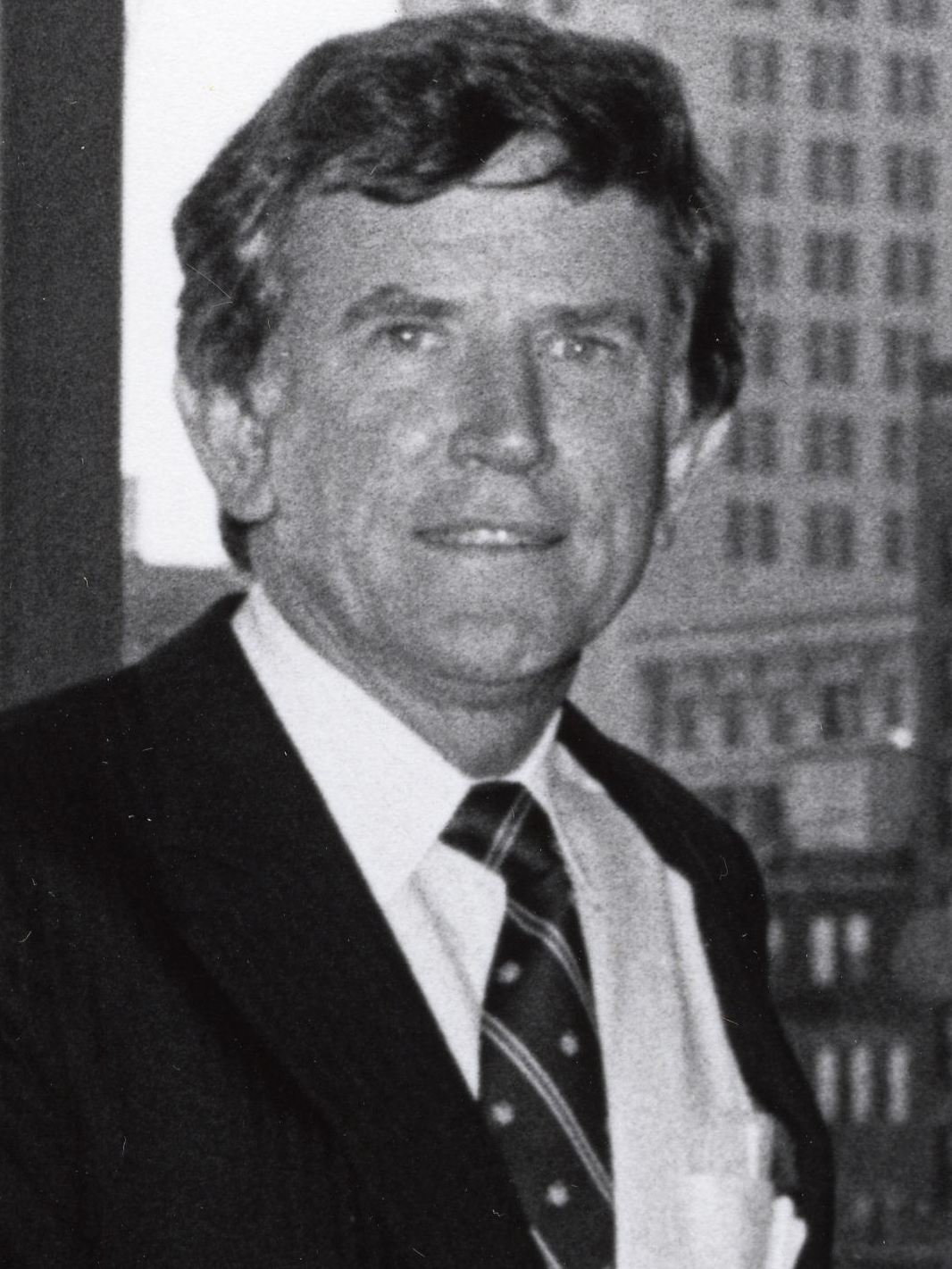
5. **Gary Hart**
Rarely has a promising presidential bid crashed and burned with such spectacular speed as that of Gary Hart. In 1988, Hart was considered the undeniable frontrunner for the Democratic presidential nomination, a charismatic figure poised to potentially lead his party to the White House. However, his campaign quickly became plagued by swirling rumors and persistent allegations of extramarital affairs, casting a dark shadow over his otherwise bright prospects.
Hart vehemently denied these allegations, confidently dismissing them as baseless gossip. In a bold, perhaps even reckless, move, he even went so far as to challenge the media directly, daring them to “follow him around” and prove the accusations. The media, never one to back down from such an invitation, accepted his challenge, and the investigation into his private life intensified dramatically, setting the stage for his eventual downfall.
The intensified scrutiny soon yielded devastating results. The press successfully linked Hart to Donna Rice, a young woman who was observed spending the night at his Washington D.C. townhouse. However, the truly damning evidence came in the form of a photograph that cemented his fate: an image of Donna Rice sitting on Hart’s lap. To make matters worse, Hart was wearing a shirt that referenced a yacht they had reportedly partied on, a vessel aptly named “Monkey Business.”
The combination of the eyewitness accounts and the irrefutable photograph made Hart’s denials utterly untenable. The image of Rice on his lap, coupled with the “Monkey Business” shirt, served as irrefutable proof of his indiscretion, validating the very rumors he had so forcefully dismissed. It didn’t take long for the immense pressure and damaged credibility to force Hart to suspend his campaign and drop out of the race entirely, ending what had once been a highly promising path to the presidency in a spectacular and unforgettable fashion.
Read more about: Beyond the Buzzwords: Unmasking the Truth Behind 17 Fast Food Claims That Might Be Playing Tricks on Your Diet

6. **Michael Dukakis**
Following Gary Hart’s dramatic withdrawal from the 1988 Democratic primaries, Massachusetts Governor Michael Dukakis emerged as the party’s nominee. Despite having run an impressive and disciplined primary campaign, Dukakis’s subsequent bid for the White House against George H.W. Bush proved to be an abysmal failure, culminating in a resounding defeat. While various factors contributed to his campaign’s shortcomings, one particular visual misstep became emblematic of his struggles: the now-infamous tank photo.
Dukakis had been relentlessly portrayed by Republicans as being “soft” on crime and weak on defense issues, a narrative that his campaign desperately sought to counter. In an attempt to project a tougher, more credible image as a potential commander-in-chief, his aides orchestrated a photo opportunity of him posing in a military tank. The intention was clear: to showcase his strength and readiness to lead the armed forces, but the execution, unfortunately, went spectacularly awry.
The resulting photograph, however, backfired with devastating effect. It depicted Dukakis in an oversized helmet that appeared comically large on his head, with his name prominently splashed across the side of the tank. Far from conveying strength or competence, the image was widely perceived as awkward and unconvincing. It was immediately seized upon by his opponent’s campaign, ruthlessly exploited in negative advertisements, and became a source of widespread ridicule across the media landscape.
The “Dukakis in the tank” photo became one of the most talked-about images of the entire 1988 presidential campaign, effectively solidifying the negative perceptions his opponents were trying to create. It transformed him from a serious contender into an object of mockery, overshadowing any substantive policy discussions. Even Dukakis himself, years later, has conceded that posing in the tank was a “huge misstep,” a visual blunder that became a defining, and ultimately destructive, moment of his presidential aspirations.
Read more about: 15 Tear-Jerking Movies: Get Your Tissues Ready for an Emotional Rollercoaster

7. **Vanessa Williams**
In September 1983, Vanessa Williams achieved a significant milestone, making history as the first African-American woman to be crowned Miss America. She embarked on her reign with grace and professionalism, fulfilling her duties admirably and representing the pageant with dignity. However, just shy of the completion of her historic year, a shocking revelation emerged that would send her world, and the Miss America Organization, into an unprecedented crisis.
It was revealed that explicit images of Williams, taken years prior, were slated for publication in Penthouse magazine. The photographs had been taken in 1982, during a period when she worked as an assistant for a photographer. Williams had been led to believe, by the photographer, that these compromising images had been destroyed, making their impending publication a profound betrayal and a deeply distressing surprise.
Even before the explicit pictures hit the newsstands, the Miss America Organization, facing intense public and internal pressure, acted decisively. They demanded Williams’ resignation, effectively stripping her of her title prematurely. The crown was then controversially awarded to the first runner-up, solidifying the abrupt and humiliating end to Williams’ historic reign and thrusting her into an immediate, unforgiving media maelstrom.
Williams endured severe ridicule and public shaming, with her name becoming synonymous with scandal. For a significant period, it appeared that her career, which had just begun to blossom, was irrevocably over. However, in a testament to her incredible resilience and talent, Vanessa Williams managed to rebound from this professional catastrophe. She successfully pivoted and established an impressive and enduring career as a versatile entertainer, proving that even the most damaging photographs cannot always extinguish true star power, and her comeback became a powerful narrative of redemption.
Alright, if you thought those first few stories were wild, buckle up because we’re diving even deeper into the digital abyss where careers go to, well, *un-live*. The world of public figures is notoriously unforgiving, and sometimes, it’s not even a big scandal, but one awkward shot or misplaced post that sends everything tumbling down. From political gaffes to historical controversies and humanitarian statements, these next eight snapshots dramatically redefined legacies and changed lives forever.
Read more about: Seriously, Where Did They Go? Unraveling the Mystery Behind 11 Beloved Classic TV Shows Vanishing from Streaming Services Today
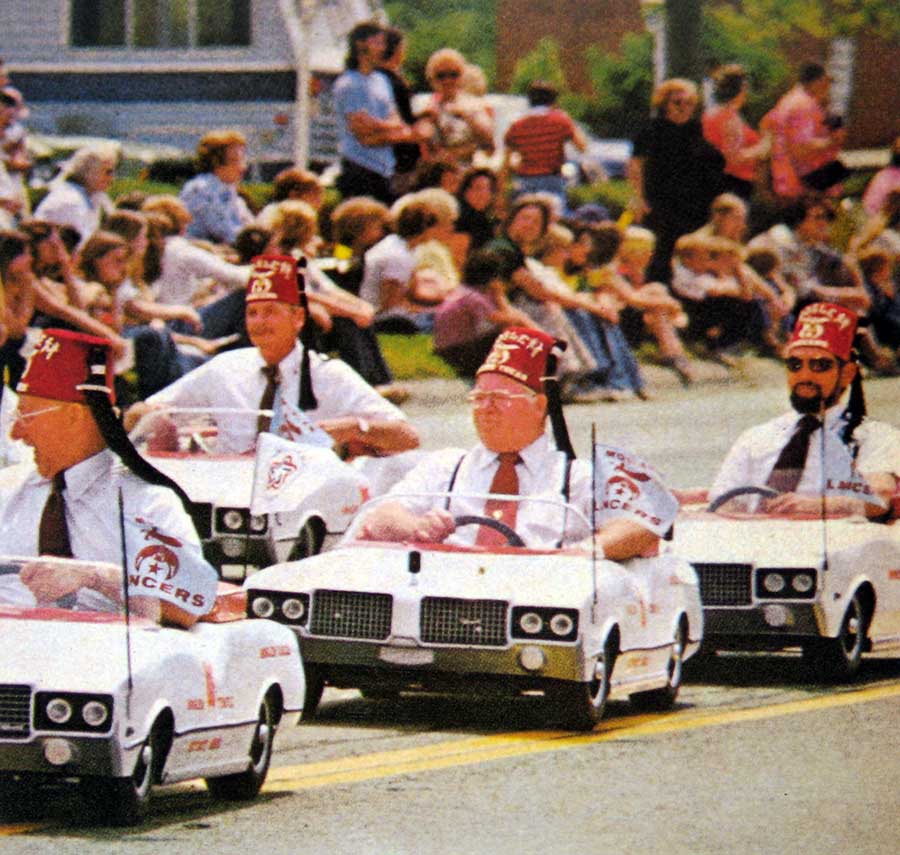
8. **Al Franken**
You probably know Al Franken from his hilarious days on “Saturday Night Live,” where he was a beloved comedy writer and cast member. He even transitioned into a serious role as a U.S. Senator. However, it seems sometimes, a comedian’s sense of humor can cross some major boundaries, even years later, as Franken found out in 2017.
That year, while serving in the Senate, Franken faced serious accusations of ual misconduct from radio broadcaster Leeann Tweeden. The allegations were already a significant blow, but then came the photo. A truly compromising image emerged, showing Franken grinning with his hands positioned above Tweeden’s breasts, all while she appeared to be asleep.
According to Franken, this was supposedly intended as a joke during a USO tour in 2006. But let’s be real, some jokes just don’t land, and this one crashed and burned spectacularly. The photo was plain, utterly damning, and completely obliterated any attempts Franken made to brush off the allegations. It just solidified the uncomfortable truth for many.
The fallout was intense. Not only did the allegations alone threaten to sink him, but the photo ensured he went down. Seven more women came forward with their own accusations, and facing immense pressure from within his own party, Franken ultimately resigned from his Senate seat. It was a spectacular political sinking, and he later expressed regret over the decision, but by then, his career on Capitol Hill was well and truly over.
Read more about: No Room for Rivals: 7 Legendary Performers Who Drew the Line on Shared Spaces
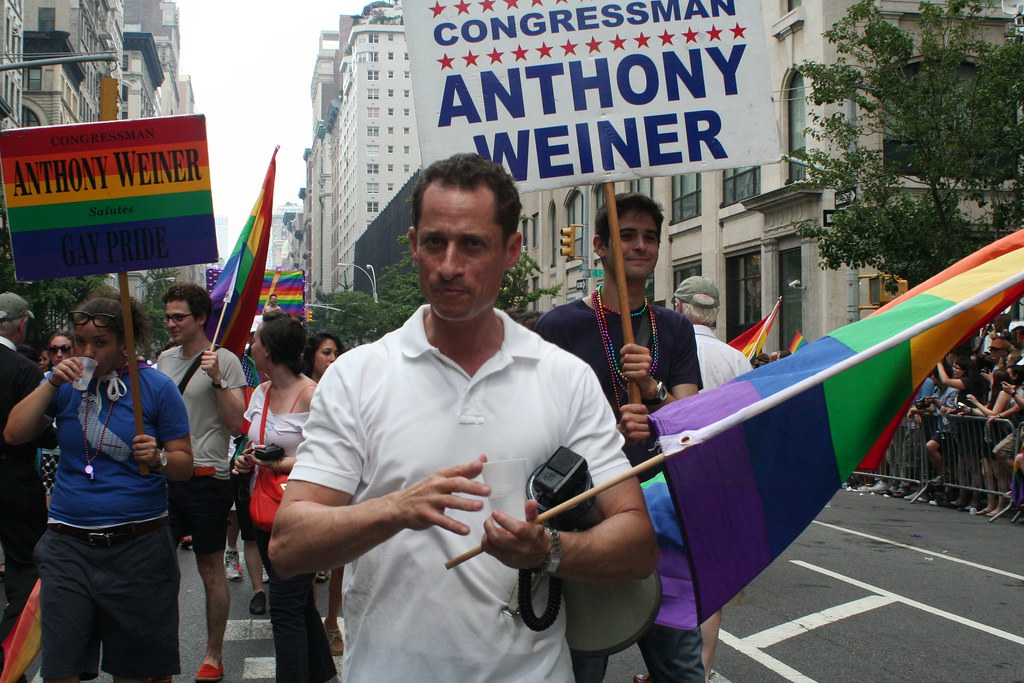
9. **Anthony Weiner**
Some people just never learn from their mistakes, and Anthony Weiner’s story feels like a masterclass in repeating history. Once viewed as a rising political star, representing New York’s 9th congressional district, Weiner’s career was cruising along until 2011, when he essentially dug himself into a hole and just kept digging.
Our story begins with a truly monumental Twitter blunder. Weiner attempted to send a private message (a “PM,” for those in the know) of himself, featuring a rather “bulging, boxer-clad groin,” to a young woman. The only problem? He accidentally posted it to his public timeline, transforming his crotch into an instant internet sensation, as CNN famously reported.
Before hitting that ill-fated send button, Weiner was riding high, even tipped as a possible future presidential candidate after a barnstorming speech about 9/11 first responders. He probably wanted everyone to know his name, just not for an ill-advised selfie of his, uh, *genitalia*. Despite realizing his mistake and deleting the tweet, it was too late. Conservative blogger Andrew Breitbart had already snagged a screenshot, ensuring the whole world would see it.
The story gained unstoppable momentum. TMZ piled on, digging up other semi- photos Weiner had sent, forcing him to resign from Congress. But that wasn’t the end! He resurfaced for a New York City mayoral run in 2013, only for *another* ting scandal to erupt. And if that wasn’t enough, 2017 saw him implicated in a third, leading to a 21-month prison sentence for explicit communication with a minor. Talk about a downward spiral!
Read more about: Beyond the Headlines: Unpacking the Most Shocking Public Meltdowns That Forced A-List Celebrities to Take a Hiatus

10. **Kathy Griffin**
Donald Trump’s presidency was certainly a divisive time, but if there was one thing that nearly everyone could agree on, it was the outright condemnation of comedian Kathy Griffin’s horrifying stunt. In May 2017, just months after Trump’s inauguration, Griffin posted a graphic image online that immediately sent shockwaves across the globe.
The photo depicted her holding a bloody mask that bore a chilling resemblance to the then-President’s severed head. The backlash was immediate and fierce, filtering in from every corner of the political spectrum. Criticism rained down, and Griffin swiftly removed the picture and issued a tearful apology on YouTube, hoping to douse the flames.
But the damage, as they say, was well and truly done. She faced severe consequences, losing multiple business deals, getting fired by CNN from her long-standing New Year’s Eve hosting gig (which ironically then pulled in record viewers without her), and having to cancel her upcoming tour dates. Her career, which had been built on edgy humor, suddenly found itself in celebrity exile.
In a move that probably didn’t help her cause, Griffin later retracted her apology at a press conference, incoherently blaming the President for “breaking” her and attempting to frame the violent image as a free speech issue. It was like trying to dig yourself out of a hole and instead tunneling straight to Australia. The photo, quite ironically, did to Griffin’s career exactly what she’d done to the Trump effigy, leading to offers for gigs at “a pop-up comedy club in Beirut, Lebanon.” Ouch.
Read more about: The 10 Most Riveting Celebrity Pet Custody Battles After Divorce
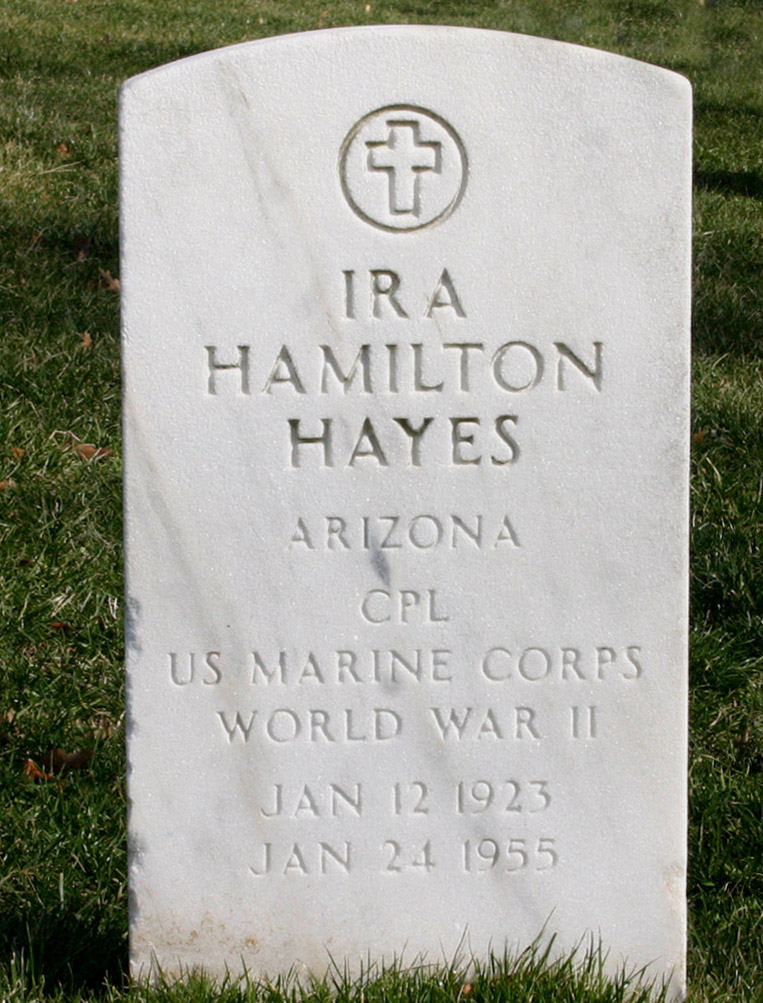
11. **Ira Hayes**
Here’s a name you might know, even if you don’t realize it. Ira Hayes is one of the indelible figures in that iconic photograph of soldiers raising the flag at Iwo Jima – he’s the one on the left, hands in the air, just releasing the flagpole as it ascends into the Pacific sky. In that single, frozen moment, Hayes became one of the most famous people in American history.
Yet, tragically, that very moment, that image of heroism, utterly destroyed his entire life and career. For a public hungry for heroes, the flag raisers were exactly what they needed. Hayes, as the only Native American in the group, was doubly celebrated, feted by all. President Roosevelt himself had the men immediately pulled from active duty, whisking them back to the States to tour and help raise bond money.
For men who had just been fighting for their lives, this should have been a dream come true. But for Hayes, it was a living nightmare. Being taken out of the Pacific theater inflicted crippling survivor’s guilt upon him. All he wanted was to be back with his “good buddies,” fighting alongside them. His newfound fame, however, had turned him into a symbol, making him more useful as a poster boy than a soldier on the front lines.
The weight of this guilt became unbearable. Hayes eventually quit the army, returned to his reservation, and tragically sank into crippling alcoholism. Less than a decade after that flag was raised over Iwo Jima, Ira Hayes drank himself to death at the age of 32. It’s a heartbreaking reminder that fame isn’t always a blessing, and sometimes, the most celebrated moments can lead to the deepest personal tragedies.
Read more about: Exploring the Enduring Legacy: A Comprehensive Overview of the Name Yvonne Across History and Culture

12. **Peter Norman**
Meet Peter Norman, the Australian athlete who, at his peak, literally outran an entire continent. His 200-meter record, set way back in 1968, remains unbroken in his native Australia to this very day. He was an Olympic silver medalist, a national hero by any standard. But the world probably remembers him more as the “white guy” in the legendary black power Olympic photo.
In 1968, during the Olympic Games, Tommy Smith and John Carlos famously raised their fists in a Black Power salute, a powerful protest that led to both men being barred from the U.S. team. What many people don’t realize is that Norman suffered immensely for simply being present. Even though he didn’t raise his fist, he chose to wear a civil rights pin on the podium in solidarity. And for that, Australia absolutely crucified him.
Despite being, without a doubt, the best sprinter in Australian history, his home country, particularly the establishment in Melbourne, decided that his quiet act of solidarity was far more significant than any number of medals. They blackballed him completely. When the Munich Olympics rolled around, Australia outright refused to send Norman, even though he was the fifth-best in the entire world and had qualified a remarkable 13 times.
How determined was Australia to distance itself from him? They didn’t even field a single sprinter that year, which is just wild. According to the BBC, that moment didn’t just wreck Norman’s athletic career; it destroyed his life, sending him into addiction. Adding insult to injury, when Sydney hosted the Olympics in 2000, he was the only former medalist in Australia *not* invited as a VIP.
Yet, his courageous stand wasn’t entirely forgotten. When Peter Norman sadly passed away in 2006, both Tommy Smith and John Carlos traveled to Australia to serve as pallbearers at his funeral. It’s a powerful testament to a man who chose principle over personal glory, and a poignant reminder that true recognition can come from unexpected places.
Read more about: Unpacking the Past: 12 Mind-Blowing ‘Lost’ Secrets of Gothic Architecture that Became Historic Superstars

13. **Dick Middleton**Imagine, for a second, becoming an international hate figure for trying to do something good. Not a good deed that spectacularly backfires, like inventing a time machine to kill Hitler only to discover the present is now a radioactive wasteland ruled by cockroaches (which, let’s be honest, would be a wild story). No, this was just a basic, decent human action. This is the bizarre reality that befell Dick Middleton.
Imagine, for a second, becoming an international hate figure for trying to do something good. Not a good deed that spectacularly backfires, like inventing a time machine to kill Hitler only to discover the present is now a radioactive wasteland ruled by cockroaches (which, let’s be honest, would be a wild story). No, this was just a basic, decent human action. This is the bizarre reality that befell Dick Middleton.
Middleton was a cop caught in the famous civil rights era picture that seems to show him allowing his dog to savagely attack a young Black kid. The image was so potent, so sickeningly evocative of the era’s racial tensions, that it was even immortalized as a famous statue in Birmingham. The world believed it showed unbridled police brutality, making Middleton an instant villain.
However, the truth, as unearthed by Malcolm Gladwell in his podcast *Revisionist History*, paints a starkly different, and incredibly tragic, picture. Gladwell’s investigation revealed that Middleton wasn’t attacking the kid; he was trying to prevent him from becoming “dog food.” Walter Gadsden, the activist in the photo, recalled accidentally bumping into Middleton, causing the police dog to lunge. Middleton, in that split second, was trying to push Gadsden away *and* hold the dog back simultaneously.
The photograph, tragically, captured this complex, frantic moment in such a way that it looked like the exact opposite was happening. In the highly charged atmosphere of the civil rights era, it was “close enough to the truth” for people to believe the worst. For Middleton, this misinterpretation meant a lifetime of hate mail and death threats. While he technically didn’t lose his job as a cop, his wife later told Gladwell that he “suffered hugely” for his unwitting presence in Birmingham that day. Sometimes, the camera truly *does* lie, or at least, distorts a far more nuanced reality.
Read more about: Gaze into the Envy-Inducing Emeralds: Discovering Hollywood’s 12 Most Captivating Green-Eyed Beauties

14. **General Loan**
It’s not every day you become globally infamous for shooting an unarmed man in the head, unless, of course, your name is Lee Harvey Oswald (and let’s be honest, John Wilkes Booth was already famous). But General Loan, well, he managed it. The setting was the brutal carnage of the Tet Offensive, and Loan, along with his South Vietnamese company, had just captured a Viet Cong operative. This particular individual had reportedly murdered the wife and children of one of Loan’s friends.
In a moment of raw, visceral vengeance that seems ripped straight from a Liam Neeson movie, Loan did what he felt he had to do: he shot the captured man in the head. And just at that precise, horrific second, journalist Eddie Adams snapped his iconic photo. But here’s the kicker: life isn’t a popcorn vigilante flick. Loan’s global audience, who saw only the execution and none of the preceding context, immediately turned him into a chilling hate figure.
Despite being instrumental in saving Saigon during the Tet Offensive, General Loan’s image became inextricably linked to that cold, callous act. His military career was irrevocably tarnished, but worse was yet to come. When Saigon eventually fell, Loan sought refuge in the U.S. However, the authorities recognized him from that infamous photograph and threatened to deport him, effectively denying him a safe haven.
It took a public intervention by none other than Eddie Adams, the very journalist who took the photo, to get Loan’s deportation order lifted. Adams, later understanding the broader human cost, would famously write: “Two people died in that photograph. The general killed the Viet Cong; I killed the general with my camera.” But the photo’s destructive power wasn’t finished. After Loan finally made it to Washington, D.C., and tried to open a restaurant, the image resurfaced yet again, forcing him to close his business. A single click, a lifetime of ruin.
Read more about: Navigating the Aftermath: Why Your Credit Score Might Temporarily Dip After Paying Off Debt (And 7 Hidden Reasons to Watch Out For)

15. **Miss Iraq (Sarah Idan)**
Beauty pageant contestants often get a lot of flak for giving those famously vague, non-committal answers to political questions, usually about “world peace.” Maybe they’re not just being bland; maybe they’re acutely aware of the potential for absolute disaster if they dare to get involved in anything even slightly controversial. Miss Iraq, Sarah Idan, found this out the hard way in 2017.
It all started innocently enough: a selfie. Idan posed for a picture with Miss Israel, then captioned it simply, “peace and love from Miss Iraq and Miss Israel.” You’d think such a sentiment would be universally celebrated, right? Wrong. In the Arab world, the photo ignited an uproar usually reserved for major international incidents, not a friendly selfie between beauty queens.
Idan was swiftly accused of ignoring the plight of Palestinians, of siding with Israel, and, perhaps most damningly, of betraying her own country. The Miss Iraq organization itself even threatened to strip her of her title. But the consequences didn’t stop there; they bled into her personal life in the most terrifying way. Her family received so many death threats that they were forced to flee the country altogether.
The Iraqi government even stepped in, demanding she take the picture down and issue an apology to the nation. Idan later alleged that her Iraqi national ID renewal was refused, effectively blocking her from getting a passport. While she technically managed to hold onto her Miss Iraq title, her career representing her country was, for all intents and purposes, completely over. It’s a stark, sobering lesson in the volatile world where celebrity meets geopolitics, and a friendly photo can literally force your family to flee.
As we’ve seen, whether it’s an accidental tweet, a misjudged photo op, a moment of tragic heroism, or even a simple selfie advocating for peace, a single image holds an astonishing power. For these prominent figures, that power reshaped their entire destinies, proving that in the digital age, a picture really isn’t just worth a thousand words – it can be worth an entire career.

